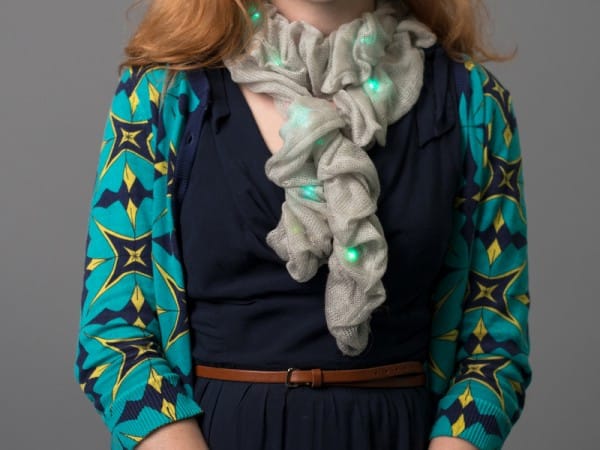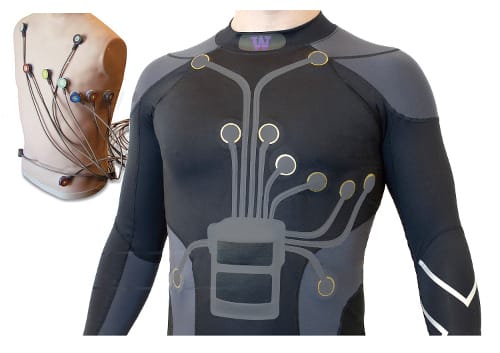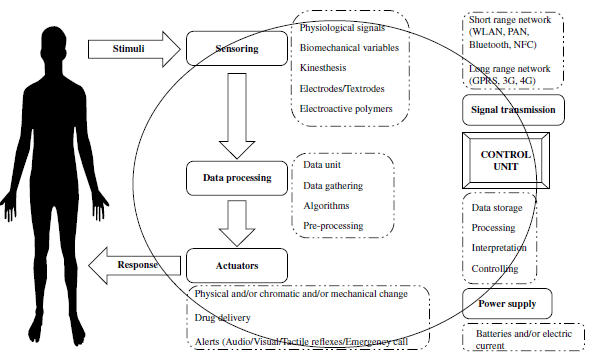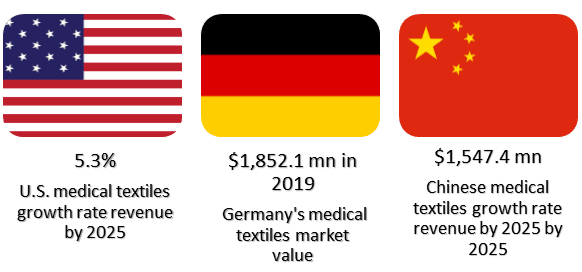Smart textiles:
Textile industry is one of the oldest industries in the world. Once its purpose was to make only cloth but now a days its purpose is way bigger. New generation of textile industry is called “Smart textile”. Smart textile means those fabrics which have technology woven in them. This technology reacts according to the surrounding and provides data. Application of smart textiles also driven by productivity enhancement and fashion and design purpose. Smart textile is an important branch of technical textile.
Types of smart textile:
Application of smart textile is majorly divided into two important area. They are:
1. Aesthetic: Aesthetic smart textile mainly focuses in using technology for fashion and design purpose. Application of smart textile technologies in this field are mainly used to enhance the outlook of the consumer.

2. Performance enhancing: Performance enhancing smart textile are used for monitoring biological factor. Here engineer mainly focus on converting human factor in data with the help of technology.

Smart textiles in medical and healthcare field:
If you are thinking that textile is all about garments, fabric, fibers, yarn and making textile goods than you are wrong. Application of smart textile is as much broader as you can imagine. Starting from medical sector to sport it is everywhere. Because of long research and adopting new technologies smart textile industry is booming now a days. In smart textile industry, medical and healthcare is a very important sector.
You may also like: Importance of Medical Textiles in Infection Prevention and Control
There are various field are we can use smart textile. Such as:
- Infant monitoring.
- Healthcare monitoring.
- Clinical trials.
- Bio feedback.
- Medical monitoring.
- Disease monitoring.
- Obstetrics monitoring.
- Athletics monitoring.
- Healthy lifestyle monitoring:
- Rehabilitation.
- Surgery
- Hygiene
- Drug release system.
- Therapy.
- Wellness.
Application of smart textile sensors:
Over the past few years integration of sensors in textile became a trend. Application of smart textile sensors are very useful for the data collection. Which makes treatment easier and more accurate. Generally working process is physical, biochemical and optical transducer which convert this signal into readable data. Generally, there are four structural categories of sensors.
- Fiber based– when a sensor is single earn is known as fiber based sensor.
- Textile structured– when all compounds of transducer are made of textile material.
- Textile integrated– when textile act as a carrier.
- Textile based– when textile is a non-sensitive but inseparable compound of a transducer.
Some sensors and their application:

1. Temperature sensors: This sensor provide data of heat production and heat loss. Temperature sensor in smart textile provide evaluation of temperature on skin surface and in the near body.
2. Respiration rate sensors: The rate of taking oxygen and removing carbon-di-oxide from body cell is known as respiration system. Its application is limited but it has important role for telemetric monitoring during sleep monitoring and some respiratory disorder.
3. Kinematic analysis: Though smart textile is used for physiological analysis, but it can also do kinematic analysis. It is very important for rehabilitation and skeleton position during therapy.
4. Humidity sensors: Humidity sensors are made for monitor sweat rate, moisture in wounds, ulcer prevention etc.
5. pH sensor: pH is measured by acid-base homeostasis. This parameter is important for wound healing process and sweat monitoring.
6. Pulse oximetry sensor: A technique which is used in study of biological tissue for estimation of the arterial oxygen saturation is call pulse oximetry. Its clinical applications are intensive care, emergency room, during anaesthesia.
You may also like: Personal Protective Equipment (PPE): Blessings of Medical Textile
7. Polyurethane sensor: Applying polyurethane paste on woven textile creates a smooth and high energy inter surface layer to facilitate a conductive track a silver paste is painted on the layer. It can also be applied on non-woven cloth to make a wearable health monitoring device.
8. Sensing harness: This sensor is used to monitoring thoracic movement and abdominal due to breathing activity without corrupting signal or overlapping signal.
Medical implants made by smart textile:
- Artificial knees.
- Artificial eye lenses.
- Artificial tendon.
- Artificial skin.
- Artificial heart.
- Artificial kidneys and lungs.
- Artificial hips.
- Artificial heart valves.
- Artificial vascular grafts.
- Artificial ligaments.
- Heart pacemaker.
- Implantable cardioverter defibrillators.
- Coronary stents. etc.
Future of smart textiles:
Scientist and designer are working on application of smart textile for years but last few years they made their way to headlines. The smart textile market value is $2.75 billion by 2016 and using of smart textiles will give boost to apparel market to $130 billion by 2025.

North America is the largest producer of smart textile now.
Conclusion:
Transforming healthcare 1.0 to healthcare 3.0 this sector is becoming more selective for smart textile because of its design, efficiency and flexibility. Though medical textile in now a rising sector but over the years application of smart textile will increase then it will become a very big sector.
References:
- High Performance Technical Textile by Roshan Paul.
- https://study.com/academy/lesson/what-are-smart-textiles.html
- https://www.marketresearchfuture.com/reports/medical-smart-textile-market-1123
- https://pdfs.semanticscholar.org/b536/fd03cfb4b9a39e1d78e746a5f39cd3f358d5.pdf
- https://www.longdom.org/open-access/impact-and-scope-of-intelligent-textiles-in-health-care-jbb-1000364.pdf
- https://www.textiletoday.com.bd/smart-textile-new-frontier-apparel-sector
Author of this Article:
Md. Sadman Nafe
B.Sc. in Textile Engineering
Textile Engineering College, Noakhali.
